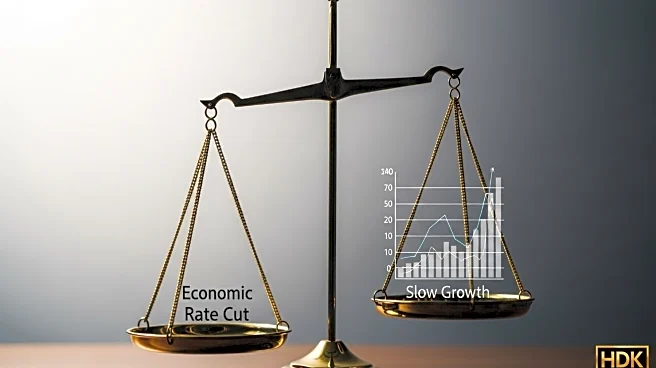What's Happening?
The Labor Department is set to release the August employment figures, which are anticipated to be a critical indicator of the current state of the U.S. labor market. This report follows President Trump's recent dismissal of Erika McEntarfer, the former Bureau of Labor Statistics Commissioner, after a disappointing July jobs report. The July report showed a significant downturn in hiring, with only 73,000 jobs added, prompting concerns about the accuracy of U.S. economic data. Economists are closely watching the August report to determine if the labor market is stabilizing or continuing to weaken. The Federal Reserve is also expected to cut its benchmark interest rate later this month, shifting its focus from controlling inflation to supporting job growth.
Why It's Important?
The upcoming jobs report is significant as it could influence the Federal Reserve's decision on interest rates. A weak report may prompt the Fed to lower rates to stimulate job growth, while a stronger report could delay such actions. The labor market's health is crucial for economic stability, especially as the holiday spending season approaches. The report's findings will also impact public confidence in the accuracy of U.S. economic data, which is vital for global economic benchmarks. Businesses and workers are particularly concerned about the potential implications of continued labor market weakness, which could affect hiring and economic growth.
What's Next?
Economists predict that the August jobs report will show a moderate gain of around 40,000 jobs, with the unemployment rate holding steady at 4.2%. If the report confirms a slowdown in the labor market, it is likely that the Federal Reserve will proceed with a rate cut at its next policy meeting on September 16-17. This decision will be closely monitored by financial markets and economic stakeholders, as it could signal a shift in monetary policy priorities. Additionally, any further revisions to previous months' job data could provide insights into the labor market's trajectory and influence future economic forecasts.












